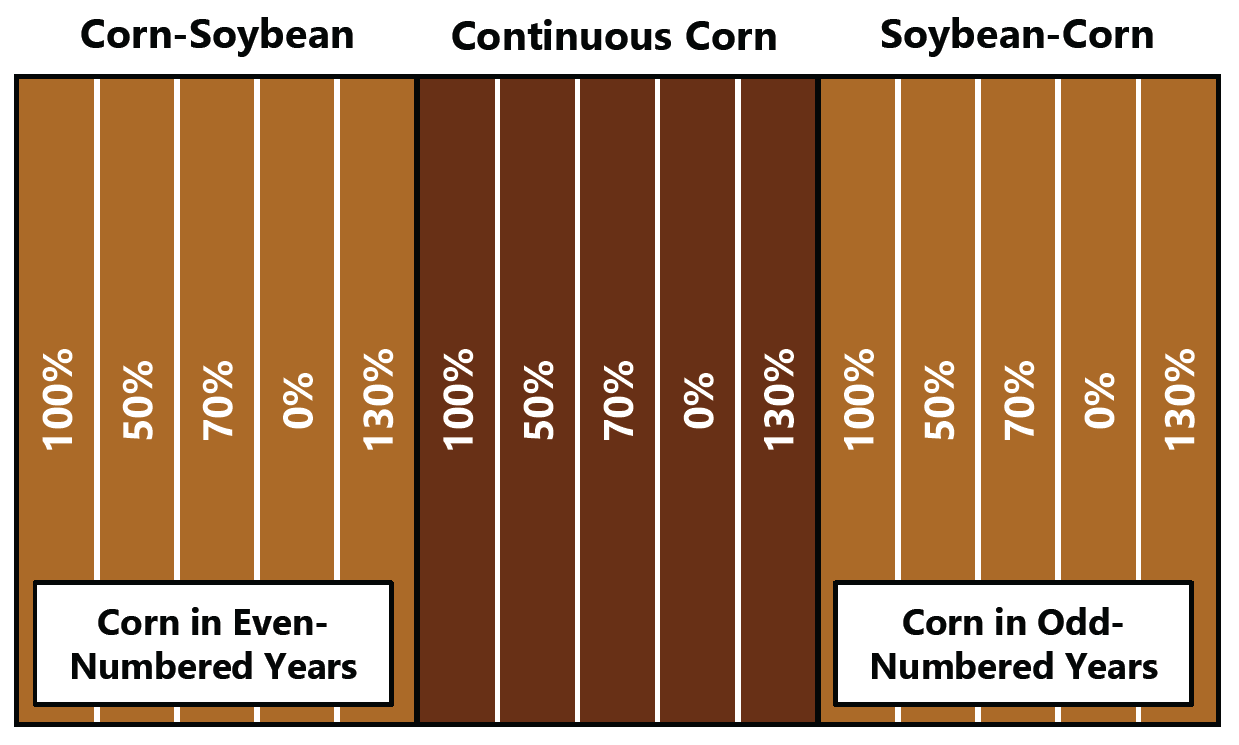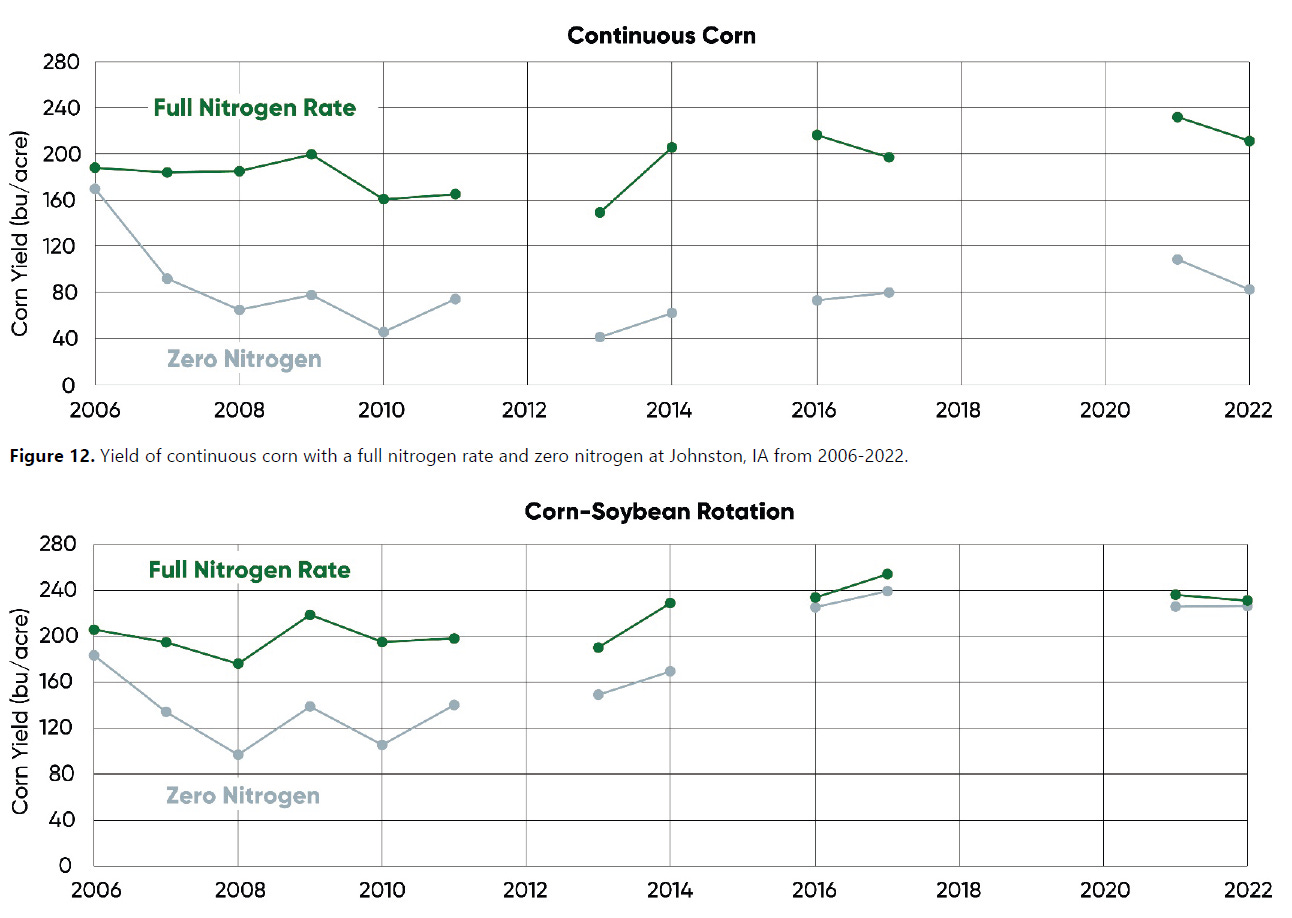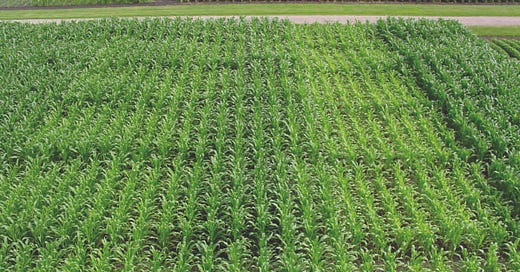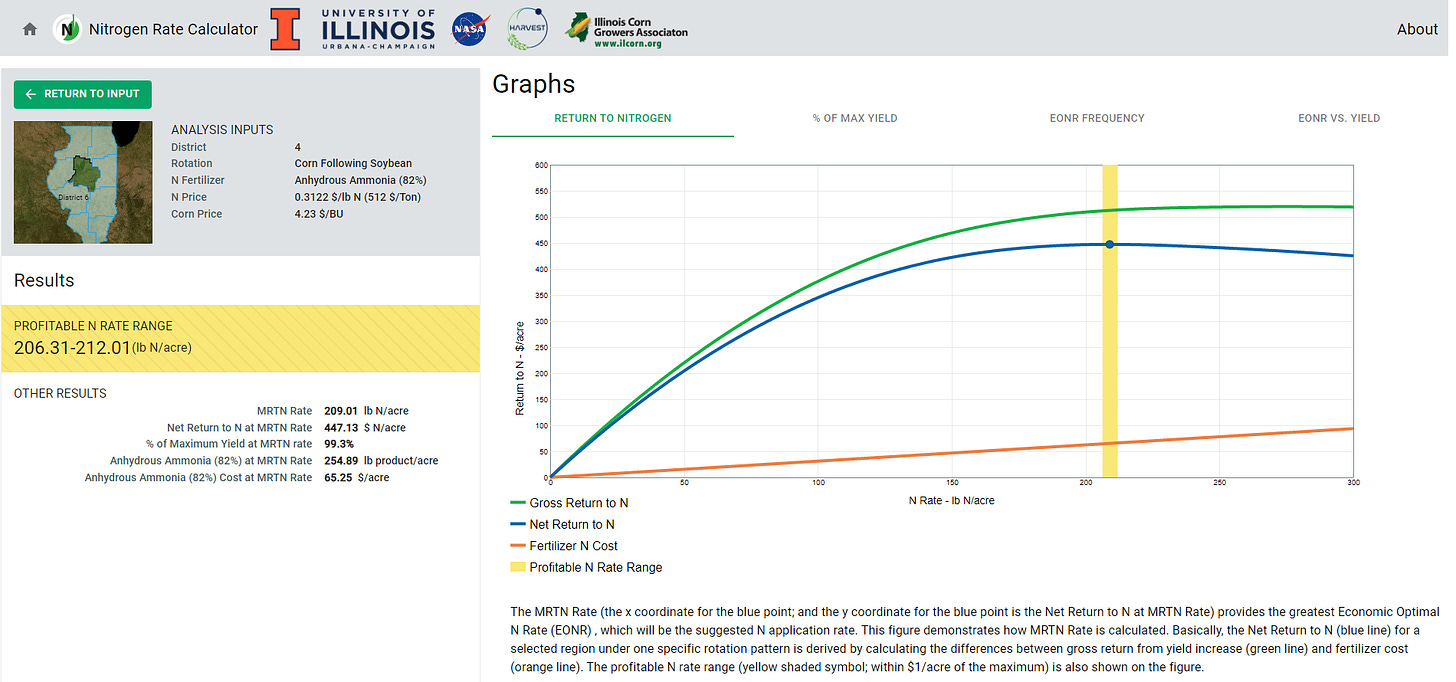

Discover more from Ag Data News
Economists, environmentalists, and farmers may all give different answers to the question posed in the title. However, a recent 17-year study by Pioneer suggests that, for corn grown in rotation with soybeans, the answer may be a "a lot less than we thought".
Most land grant universities in the Midwest have a nitrogen calculator that solves for the optimal nitrogen application the way a student would in an intermediate microeconomics class. Start at zero fertilizer. Then add a pound of fertilizer and check whether revenue (green line) goes up more than the fertilizer costs (orange line). If so, add another pound.
Keep going as long as adding fertilizer makes more money than it costs. In the example below, the farmer would apply between 206 and 212 pounds per acre (screenshot from the University of Illinois calculator).
A substantial fraction of the nitrogen fertilizer applied to corn is not used by the plant, but instead ends up in waterways. In a recent working paper, Kostas Metaxoglou and I estimate that an additional corn acre generates 2.45 pounds of additional nitrogen pollution in nearby small rivers and streams within the same year on average. This estimate likely understates the amount of excess nitrogen applied to cornfields by an order of magnitude. Most excess nitrogen from fields goes into subsurface soil and groundwater and will leach into rivers and streams in future years.
As we document in our paper, about 40% of United States streams and rivers are in poor condition due to their nitrogen levels. Nitrate concentrations exceed the federal drinking-water standard in more than 20% of of shallow domestic wells in agricultural areas. Excessive nutrients from the Mississippi River Basin have caused a 5,000 square mile area in the Gulf of Mexico to become hypoxic killing fish and other marine life.
Commercial fertilizers applied to crops are a major source of this nitrogen pollution. Commercial fertilizers applied to crops are a major source of this nitrogen pollution. This is an externality, and it means that the true cost of fertilizer is higher than the price of fertilizer. If the nitrogen rate calculator accounted for this true cost, it would recommend using less fertilizer.
I will write much more about Kostas's and my paper in the future. Today, I want to focus on the amount of fertilizer needed.
There is a perception that many farmers over-apply nitrogen because they fear yield and profit losses from applying too little. Look at the blue line in the output from the University of Illinois calculator above. Use too much fertilizer and profit drops a bit; use too little and profit drops a lot.
So, what would happen if farmers applied less fertilizer?
Pioneer recently provided an answer to this question from a 17 year study at their Johnston, Iowa research station. They defined 100% nitrogen rate to be that recommended by a calculator like the one above and applied varying percentages of that economically optimal amount to different strips.

In the first 8 years of the continuous corn treatments, yields were about 60% lower on zero nitrogen fields than on full nitrogen fields. For strips on a corn-soybean rotation, yields were about 40% lower on zero nitrogen fields than on full nitrogen fields. Soybeans fix nitrogen from the air into the soil, which the corn can use in the following year.
Then something amazing happened. Yields on the zero nitrogen strips in corn-soybean rotation started increasing. In years 11-17 of the study, the strips with zero nitrogen had similar yields to those receiving full nitrogen.

Is this too good to be true? Perhaps. I certainly don't know enough agronomy to speculate about what's going on in these soils.
Pioneer states in their conclusion that "caution is justified in considering the results, as this is a non-replicated trial, conducted at only one location in its later years". They remark that the findings "were unexpected and the reason for them is unknown." Nonetheless, it certainly seems like low long-run nitrogen application rates need to be studied along with other potential solutions such as precision application using AI, nitrogen-fixing corn, and fluvial wetlands.
It's good that Pioneer this continuing this trial.















The NPK with a soil “test” method is so incredibly corporate, agrabusiness sales driven.
Do you have a PhD in maintaining the dominant planet killing toxic paradigm. You certainly don’t know anything about agriculture if you are lending this antiquated industrial reliant model legitimacy.